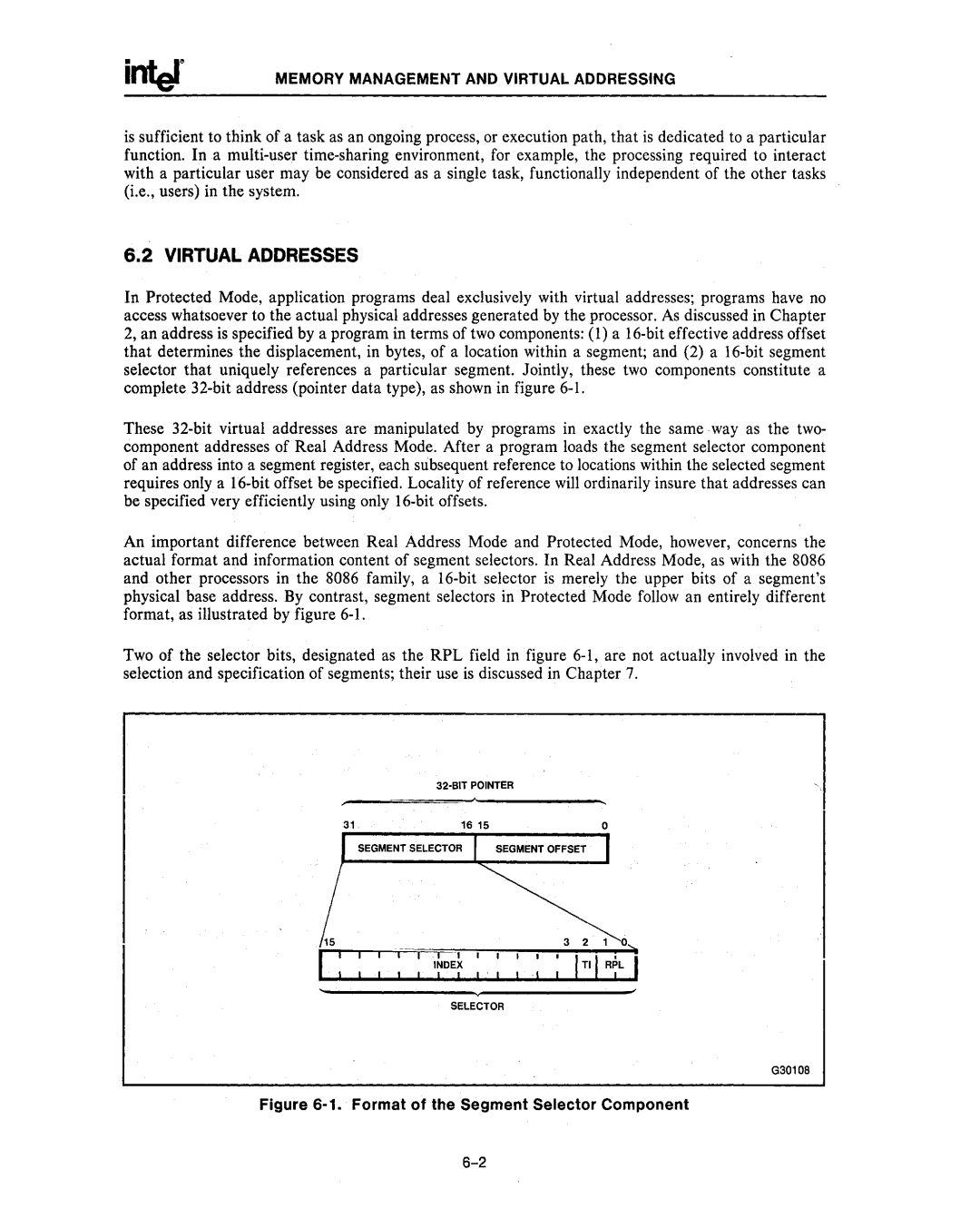
MEMORY MANAGEMENT AND VIRTUAL ADDRESSING
is sufficient to think of a task as an ongoing process, or execution path, that is dedicated to a particular function. In a
6.2 VIRTUAL ADDRESSES
In Protected Mode, application programs deal exclusively with virtual addresses; programs have no access whatsoever to the actual physical addresses generated by the processor. As discussed in Chapter 2, an address is specified by a program in terms of two components: (l) a
These
An important difference between Real Address Mode and Protected Mode, however, concerns the actual format and information content of segment selectors. In Real Address Mode, as with the 8086 and other processors in the 8086 family, a
Two of the selector bits, designated as the RPL field in figure
16 15 | o |
SEGMENT SELECTOR SEGMENT OFFSET
i I I I I I INDEX
I! . I
SELECTOR
G30108
